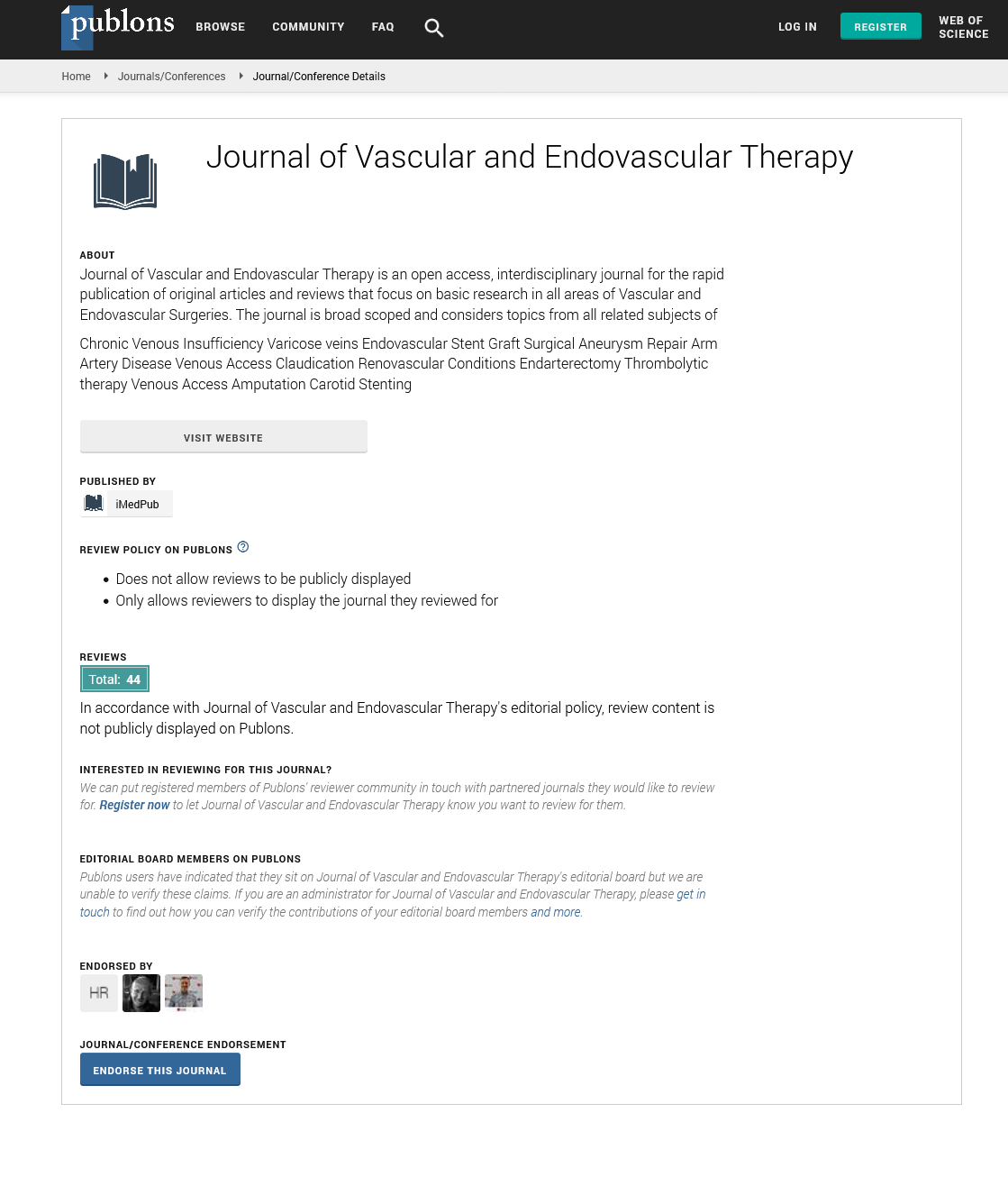ISSN : 2634-7156
Journal of Vascular and Endovascular Therapy
Chronic superior vena cava syndrome: cause of continuous passage of blood from the territory of venous system to the cerebrospinal venous circulation and possible cohorts for several neurodegenerative diseases
4th Edition of World Congress & Exhibition on Vascular Surgery
March 28-29, 2019 Rome, Italy
S Spagnolo
GVM Care & Research, Italy
Keynote: J Vasc Endovasc Therapy
DOI: 10.21767/2573-4482-C1-004
Abstract
In superior vena cava syndrome (SVCS), the venous blood from the upper torso reaches the right atrium through four well-known collateral pathways. Unexpectedly, numerous imaging studies showed that in the left brachiocephalic venous stenosis the blood reverses its flow direction and heads towards the jugular and cerebral veins. Venous flow direction is always unidirectional and centripetal, while the bidirectional flow is a unique feature of compensatory venous circle. The jugular vein reflux, well described in the literature, can only be interpreted as a typical centrifugal flow of a collateral circulation. Our hypothesis is that the cerebrospinal venous system itself constitutes a compensation circle, which connects the superior vena cava to the inferior one. This hypothesis is corroborated by the current knowledge on the cerebrospinal venous system that is considered a unique, valve less, bidirectional flow circuit that freely communicates with superior and inferior vena cava. From 2010 to today we have operated for plastic enlargement with patches in the saphenous vein, 120 patients with congenital stenosis of the superior vena cava system. Here we report the angiography of first two patients with vena cava stenosis; in one we describe the inversion of flow from the location of the obstruction towards the cerebrospinal circle and in the other we describe the passage of venous blood from peripheral tissues to the cerebrospinal circle. The continuous passage of venous blood from the superior cava system into the cerebrospinal circulation opens up new perspectives in the explanation of etiopathogenesis of many neurodegenerative diseases (infant neurological diseases, multiple sclerosis, Parkinson’s disease and Alzheimer’s). In vena cava stenosis then, the cerebrospinal circle is subjected to an increase in pressure, in volume overload and in the possibility, as demonstrated in literature, that infections, emboli or tumors can be transmitted directly from the periphery to the brain through the venous route
Recent Publications:
1. Sy W M and Lao R S (1982) Collateral pathways in superior vena cava obstruction as seen on gamma images. Br J Radiol 55:294-3004.
2. Francesco Puma and Jacopo Vannucci (2012) Superior vena cava syndrome, “Topics in Thoracic Surgery”, book edited by Paulo F Guerreiro Cardoso, ISBN 978-953-51-0010-2
3. Batson O V (1940) The function of the vertebral veins and their role in the spread of metastases. Ann Surg. 112:138-149.
4. Anderson R (1951) Diodrast studies of the vertebral and cranial venous systems to show their probable role in cerebral metastases. J Neurosurg. 8:411-422.
5. Arnautovic K I, Al-Mefty O, Pait T G, et al. (1997) The suboccipital cavernous sinus. J Neurosurg. 86:252-262.
Biography
S Spagnolo is a University of Milan graduate. He is a Specialist in General Surgery, Cardiovascular Surgery and in Thoracic Surgery. He works at the Istituto Clinico Ligure Alta Specialty (ICLAS) Rapallo (GE). He has published more than 125 articles.
E-mail: spagnolo.salvatore@libero.it
Google Scholar citation report
Citations : 177
Journal of Vascular and Endovascular Therapy received 177 citations as per Google Scholar report
Journal of Vascular and Endovascular Therapy peer review process verified at publons
Abstracted/Indexed in
- Google Scholar
- Open J Gate
- Publons
- Geneva Foundation for Medical Education and Research
- Secret Search Engine Labs
Open Access Journals
- Aquaculture & Veterinary Science
- Chemistry & Chemical Sciences
- Clinical Sciences
- Engineering
- General Science
- Genetics & Molecular Biology
- Health Care & Nursing
- Immunology & Microbiology
- Materials Science
- Mathematics & Physics
- Medical Sciences
- Neurology & Psychiatry
- Oncology & Cancer Science
- Pharmaceutical Sciences
